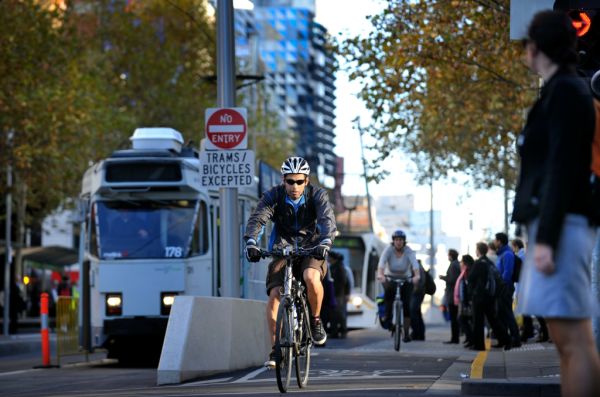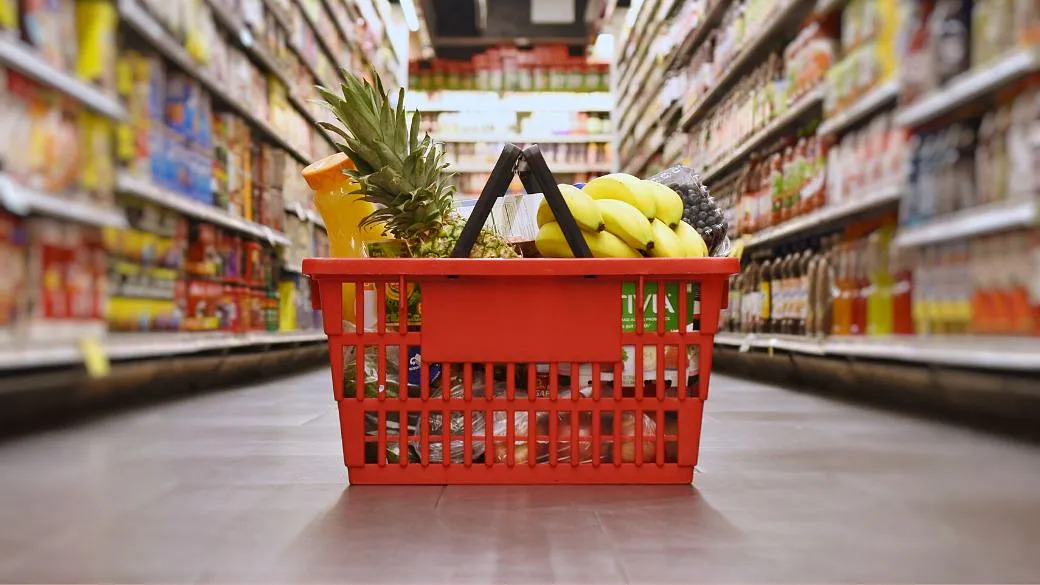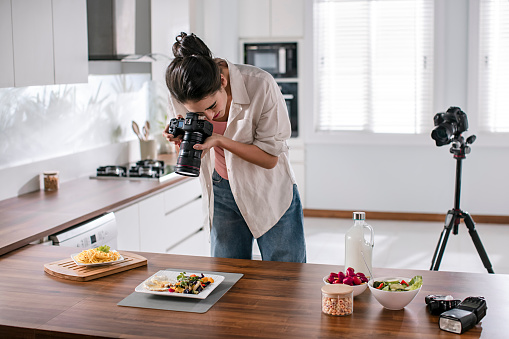7 money-saving tips to combat soaring inflation and interest rates
- Replies 4
As the cost of living skyrockets, many more Australians are becoming worried about the affordability of basic necessities. There’s no denying that everyone is clutching onto their wallets tighter as inflation and interest rates hike up, completely out of our control.
If you can relate, here are seven popular money-saving strategies that Aussies swear by to combat the rising costs of… Well, nearly everything.

Bundle up and swap books! Source: The Pioneer Woman
1. Small changes make a huge impact
For one savvy shopper, Kate Reynolds, small changes made all the difference. She shared that she opts to use loads of blankets to save on heating costs and engages in ‘book swaps’ with her friends.
‘I read a lot, so I was spending a lot on books. Now, I share them with other friends and use the library,’ she said.
‘I also light candles in the house to give the illusion of heat and warmth. I swear by it. And it makes the house feel nice and cosy.’
She added spending her holidays camping with her husband. ‘Initially, it was expensive to get all the gear, but now we have it all. Our camping holidays are cheap as we just need food, fuel, and firewood. You can pick up lots of camping stuff second-hand.’
‘I learned how to weave so I can make wall hangings as gifts for friends and family, rather than splashing out loads of cash.’ she continued.

Avoid rising petrol prices entirely. Source: Domain
2. Skip using the car
We all got a front row seat to witnessing the prices of petrol go through the roof, so it’s better to avoid using your vehicle completely if you can. Use public transport, walk, or ride a bike instead! It not only helps save the environment but also keeps you active.
In addition to Kate’s little ways to keep her expenses down, she also implemented a 30-minute walking rule.
‘If it takes 30 minutes, I’ll walk. It’s great exercise and saves on fuel and public transport costs.’

Bring out your inner barista! Source: The Herald
3. Coffee cutbacks
Another frugal shopper and her husband, Jaimie and Matt Abbott, analysed the total amount they have spent on coffees over the past year. Needless to say, they were gobsmacked.
‘We were buying a takeaway coffee each–twice a day. When we reviewed our budget across the year we had spent over $7,000 on coffee,’ said the mum-of-two.
To drag their expenses down, they decided to buy a high-end coffee machine and steer clear of take-aways.
‘We spent $1,400 on a coffee machine and we now get all of our coffee at home. I also bought a coffee warmer, which keeps coffee warm for hours. I fill this up before I leave home for work,’ she said.
Even though spending $1,400 for a coffee machine sounds counter-productive, the couple claimed that they have already made back the cost of the machine in savings in just two months.

Grab those essentials now! Source: Women’s Weekly
4. Shop smart
When buying non-perishable goods, including toilet paper, detergents, etc, consider buying them in bulk (when they are on sale) to save a few more bucks in the long run.
Kate shared that she plans all their meals for the week and does a big shop to ensure that the fridge is stocked and they don’t get tempted to get takeaways.
One more thrifty shopper, Linda Tran, said she saved roughly 60 per cent of their food bills by simply cooking meals at home.
‘This can save a ton of money rather than it being wasted on takeaways. I’ve also learned the fun skills of cooking. My partner and I have saved so much.’
Similarly, Abbott bought a $20 slow cooker to make the job easier, cheaper, and just as delicious as a takeaway meal.
‘We hardly ever get takeaways anymore. As much as we love takeaways, our slow cooker has been amazing and we've made delicious slow-cooked lamb, brisket and chicken curries.’ she said.
With grocery prices surging, millions of Australians have opted to cook their meals at home as a way to cut their expenses.

Where is your money going? Source: Unsplash
5. Regularly review your cash flow
At just 27 years old, Tran owns three properties and understands that brushing up on her cash flow is the key to keeping her finances in check. In fact, it’s her number one money-saving tip!
‘Take out your notebook, app, or spreadsheet and calculate what’s on your plate. I normally review my cash flows every quarter. Then, I adjust and reallocate my funds accordingly to suit my expenses,’ she said.
Tran also likes to pay off her small debts first. She doesn’t own a credit card, but she does have a HECS loan.
‘The indexation rate for HECS loans has risen to a whopping 3.9 per cent for 2022, compared to last year at 0.6 per cent.’
‘No one likes a lurking debt that seems to never go away,’ she said.

Don’t be afraid to venture out. Source: Unsplash
6. Shop around to find the best deals
As part of Tran’s regular cash flow review, she also checks her home loan.
‘It's really helpful, given the stark lifts in interest rates recently. I shop around and am in the middle of negotiating a better deal with various banks.’
Greg Mawer FCPA and director of Accumulate Accountants agrees that anyone with a mortgage should shop around for a better deal.
‘The loyalty tax is real – it’s the cost of being lazy. I find it strange that people are happy to wait in line for 20 minutes to save $10 on petrol, but they won’t invest a few hours to potentially save tens of thousands on their mortgage.’
If you have savings, now is also a good time to shop around.
‘There are high savings accounts offering rates in a low three per cent range and term deposits in the fours.’
This strategy can also be applied to everyday items. The same set of goods can have varying prices at different stores, so it always pays to look around online and save.

If you’re good at something, sell it! Source: Unsplash
7. Take up a side hustle
A side hustle can also help you cope with the rising cost of living too.
Tran has started dabbling in shares to build her portfolio. ‘Why live below your means when you can expand them? Look for a side hustle and take on something you enjoy.’ she added.
There you have it, frugal queens and kings! Do you have any good money-saving tricks up your sleeve? Share them with us in the comments!
Learn more money-saving tips by watching the video below:
Source: Invest With Queenie
If you can relate, here are seven popular money-saving strategies that Aussies swear by to combat the rising costs of… Well, nearly everything.
Bundle up and swap books! Source: The Pioneer Woman
1. Small changes make a huge impact
For one savvy shopper, Kate Reynolds, small changes made all the difference. She shared that she opts to use loads of blankets to save on heating costs and engages in ‘book swaps’ with her friends.
‘I read a lot, so I was spending a lot on books. Now, I share them with other friends and use the library,’ she said.
‘I also light candles in the house to give the illusion of heat and warmth. I swear by it. And it makes the house feel nice and cosy.’
She added spending her holidays camping with her husband. ‘Initially, it was expensive to get all the gear, but now we have it all. Our camping holidays are cheap as we just need food, fuel, and firewood. You can pick up lots of camping stuff second-hand.’
‘I learned how to weave so I can make wall hangings as gifts for friends and family, rather than splashing out loads of cash.’ she continued.
Avoid rising petrol prices entirely. Source: Domain
2. Skip using the car
We all got a front row seat to witnessing the prices of petrol go through the roof, so it’s better to avoid using your vehicle completely if you can. Use public transport, walk, or ride a bike instead! It not only helps save the environment but also keeps you active.
In addition to Kate’s little ways to keep her expenses down, she also implemented a 30-minute walking rule.
‘If it takes 30 minutes, I’ll walk. It’s great exercise and saves on fuel and public transport costs.’
Bring out your inner barista! Source: The Herald
3. Coffee cutbacks
Another frugal shopper and her husband, Jaimie and Matt Abbott, analysed the total amount they have spent on coffees over the past year. Needless to say, they were gobsmacked.
‘We were buying a takeaway coffee each–twice a day. When we reviewed our budget across the year we had spent over $7,000 on coffee,’ said the mum-of-two.
To drag their expenses down, they decided to buy a high-end coffee machine and steer clear of take-aways.
‘We spent $1,400 on a coffee machine and we now get all of our coffee at home. I also bought a coffee warmer, which keeps coffee warm for hours. I fill this up before I leave home for work,’ she said.
Even though spending $1,400 for a coffee machine sounds counter-productive, the couple claimed that they have already made back the cost of the machine in savings in just two months.
Grab those essentials now! Source: Women’s Weekly
4. Shop smart
When buying non-perishable goods, including toilet paper, detergents, etc, consider buying them in bulk (when they are on sale) to save a few more bucks in the long run.
Kate shared that she plans all their meals for the week and does a big shop to ensure that the fridge is stocked and they don’t get tempted to get takeaways.
One more thrifty shopper, Linda Tran, said she saved roughly 60 per cent of their food bills by simply cooking meals at home.
‘This can save a ton of money rather than it being wasted on takeaways. I’ve also learned the fun skills of cooking. My partner and I have saved so much.’
Similarly, Abbott bought a $20 slow cooker to make the job easier, cheaper, and just as delicious as a takeaway meal.
‘We hardly ever get takeaways anymore. As much as we love takeaways, our slow cooker has been amazing and we've made delicious slow-cooked lamb, brisket and chicken curries.’ she said.
With grocery prices surging, millions of Australians have opted to cook their meals at home as a way to cut their expenses.
Where is your money going? Source: Unsplash
5. Regularly review your cash flow
At just 27 years old, Tran owns three properties and understands that brushing up on her cash flow is the key to keeping her finances in check. In fact, it’s her number one money-saving tip!
‘Take out your notebook, app, or spreadsheet and calculate what’s on your plate. I normally review my cash flows every quarter. Then, I adjust and reallocate my funds accordingly to suit my expenses,’ she said.
Tran also likes to pay off her small debts first. She doesn’t own a credit card, but she does have a HECS loan.
‘The indexation rate for HECS loans has risen to a whopping 3.9 per cent for 2022, compared to last year at 0.6 per cent.’
‘No one likes a lurking debt that seems to never go away,’ she said.
Don’t be afraid to venture out. Source: Unsplash
6. Shop around to find the best deals
As part of Tran’s regular cash flow review, she also checks her home loan.
‘It's really helpful, given the stark lifts in interest rates recently. I shop around and am in the middle of negotiating a better deal with various banks.’
Greg Mawer FCPA and director of Accumulate Accountants agrees that anyone with a mortgage should shop around for a better deal.
‘The loyalty tax is real – it’s the cost of being lazy. I find it strange that people are happy to wait in line for 20 minutes to save $10 on petrol, but they won’t invest a few hours to potentially save tens of thousands on their mortgage.’
If you have savings, now is also a good time to shop around.
‘There are high savings accounts offering rates in a low three per cent range and term deposits in the fours.’
This strategy can also be applied to everyday items. The same set of goods can have varying prices at different stores, so it always pays to look around online and save.
If you’re good at something, sell it! Source: Unsplash
7. Take up a side hustle
A side hustle can also help you cope with the rising cost of living too.
Tran has started dabbling in shares to build her portfolio. ‘Why live below your means when you can expand them? Look for a side hustle and take on something you enjoy.’ she added.
There you have it, frugal queens and kings! Do you have any good money-saving tricks up your sleeve? Share them with us in the comments!
Learn more money-saving tips by watching the video below:
Source: Invest With Queenie







